Today I’d like to share a single tip for styling shohin bonsai – focus on branch density.
As you look at photos of shohin displayed at this year’s Kokufu exhibit, you’ll notice that all of the trees are full.
There’s a good reason for this. Because the trees are displayed in groups, it makes sense to present trees with similar visual weight to create balanced compositions.
When all of the trees in a shohin display are full, it’s easier for us to focus on the character and movement of each tree.
Here, for example, are two shohin black pines with subtle movement.
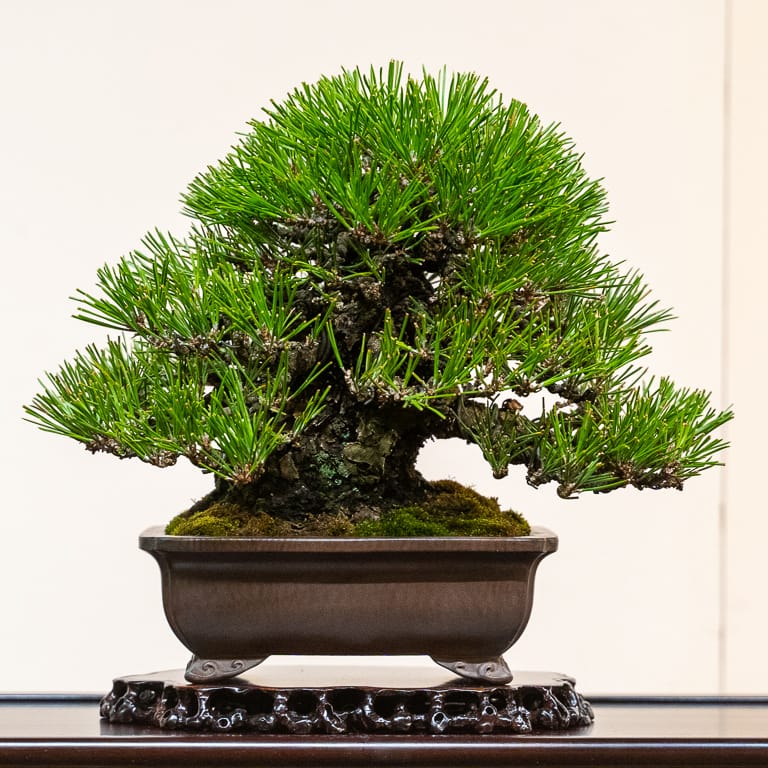
Black pine that points to the right
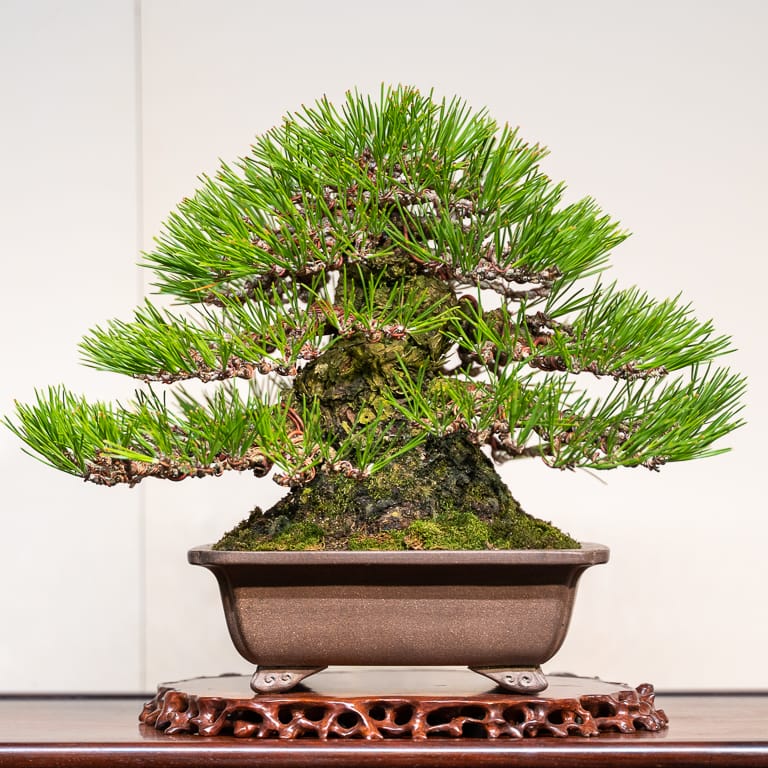
Black pine pointing to the left
When each tree points clearly to the left or the right, artists can create engaging displays that keep the viewer’s gaze within the display. Black pines typically sit in the top spot in box displays so their movement is usually subtle (see “Anatomy of a shohin display” for more about shohin display).
Within the box, the movement can range from a lot to a little. The kinzu below points clearly to the left.
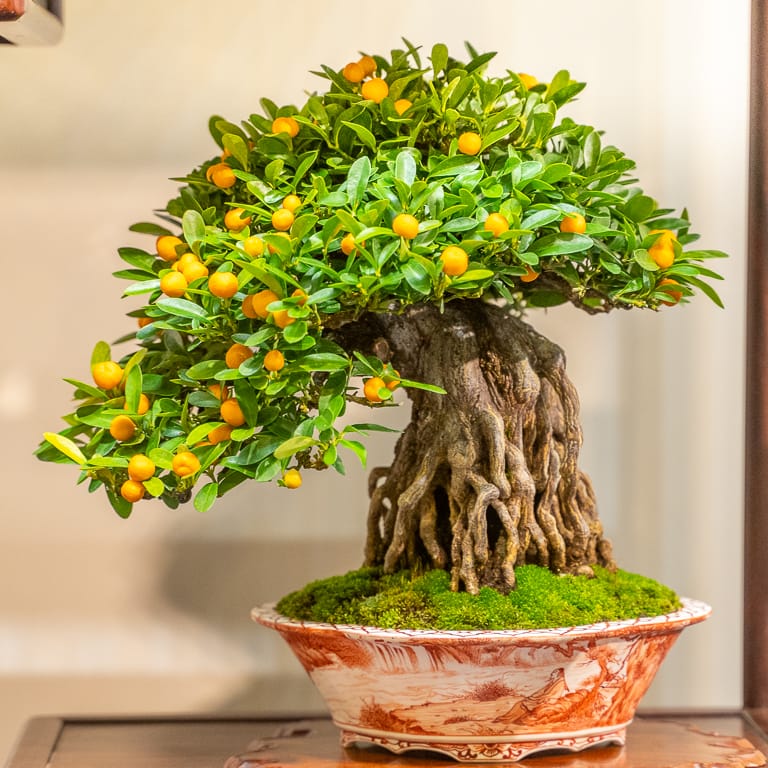
Kinzu
The prenma below also points to the left, but the movement is so subtle that the tree could be used on either side of a display.
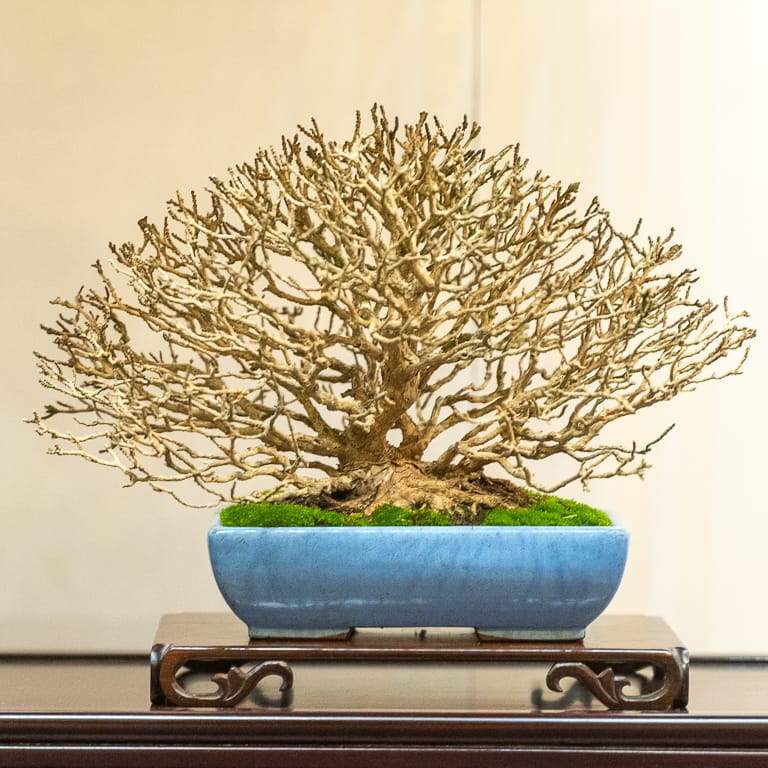
Prenma
We expect more side to side movement from junipers.
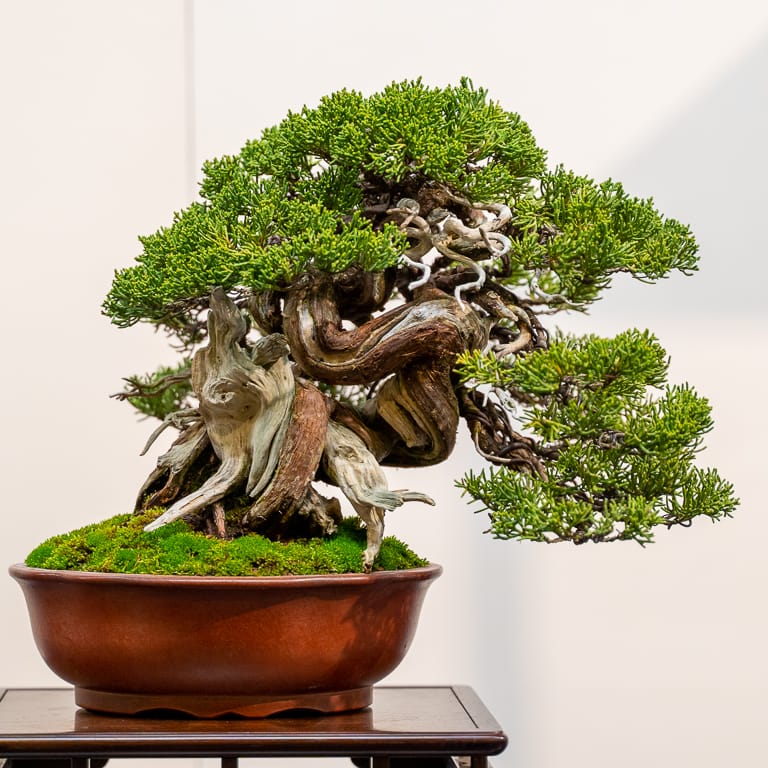
Shimpaku
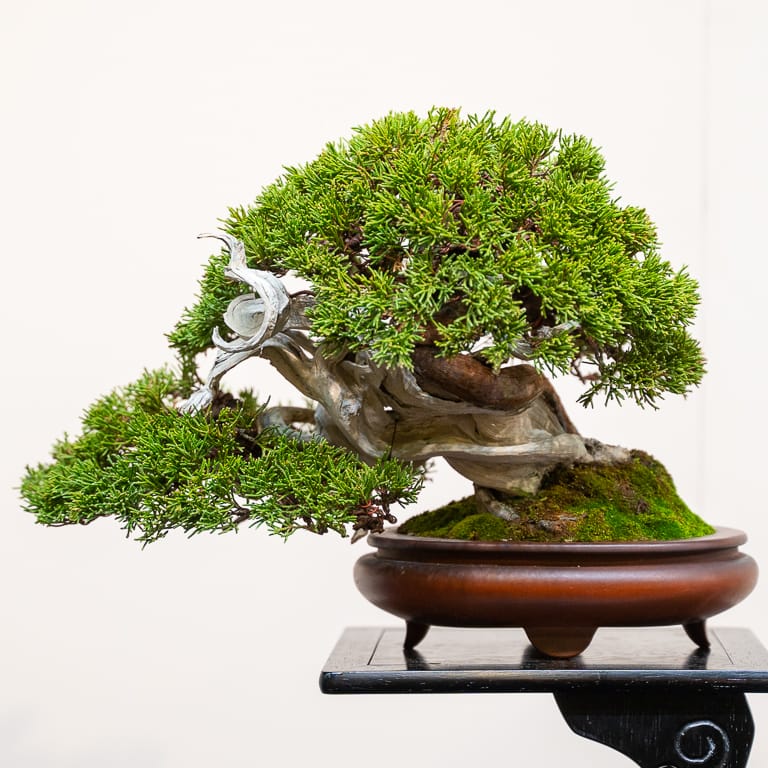
Shimpaku
Deciduous shohin typically have less pronounced movement.
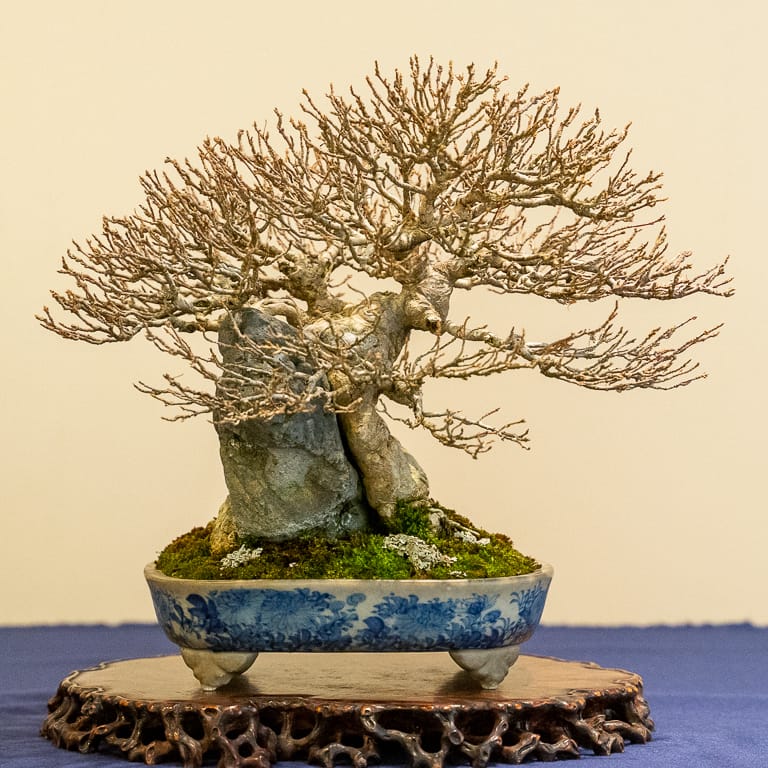
Trident maple that points to the right
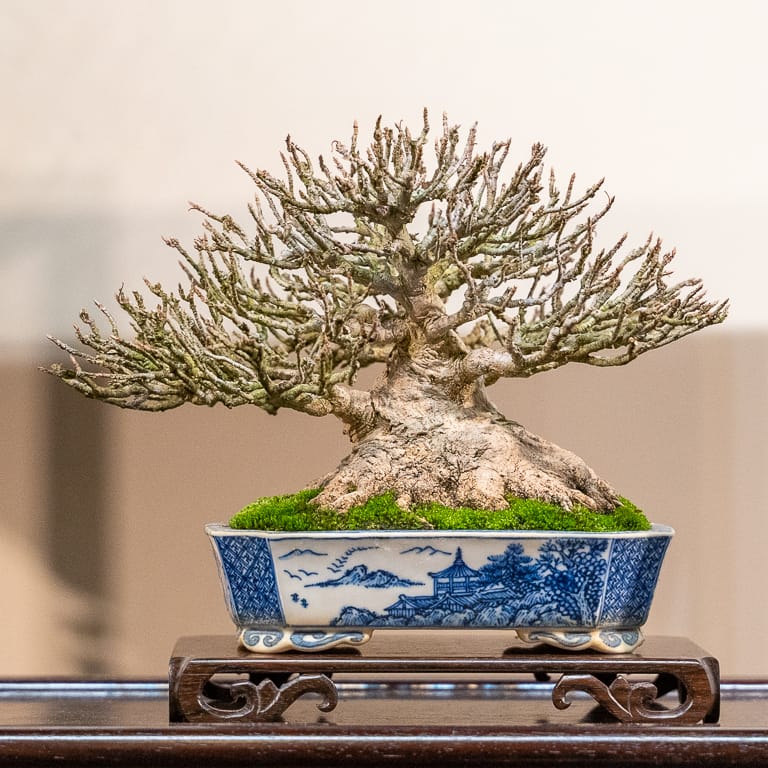
Trident maple pointing to the left
White pines are most commonly used on top of box stands or on cascade stands to the side of the box. The specimen below sat atop a four-tree box stand.
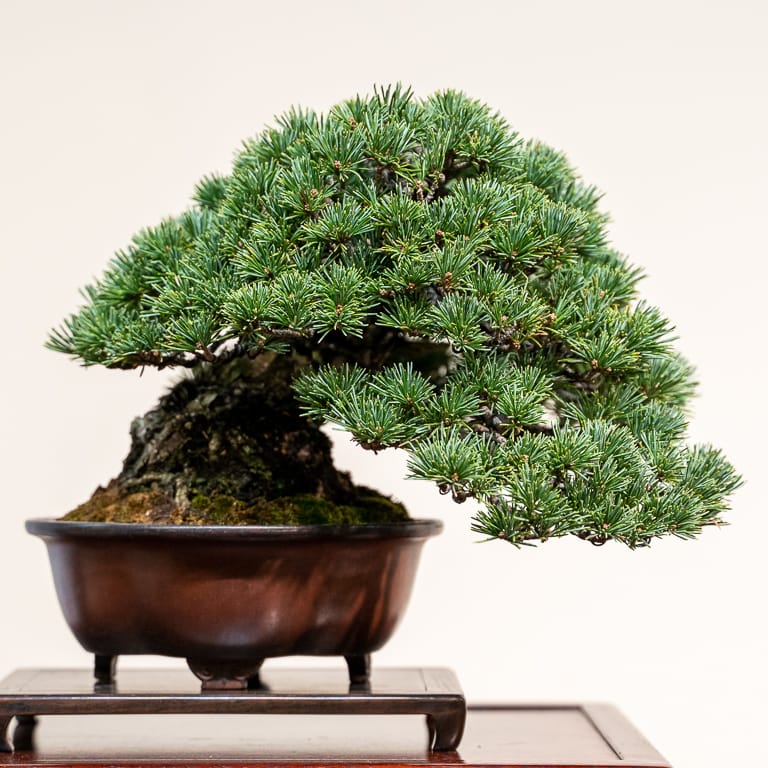
White pine pointing to the right
The cascade white pine below was positioned on the left side of the display.
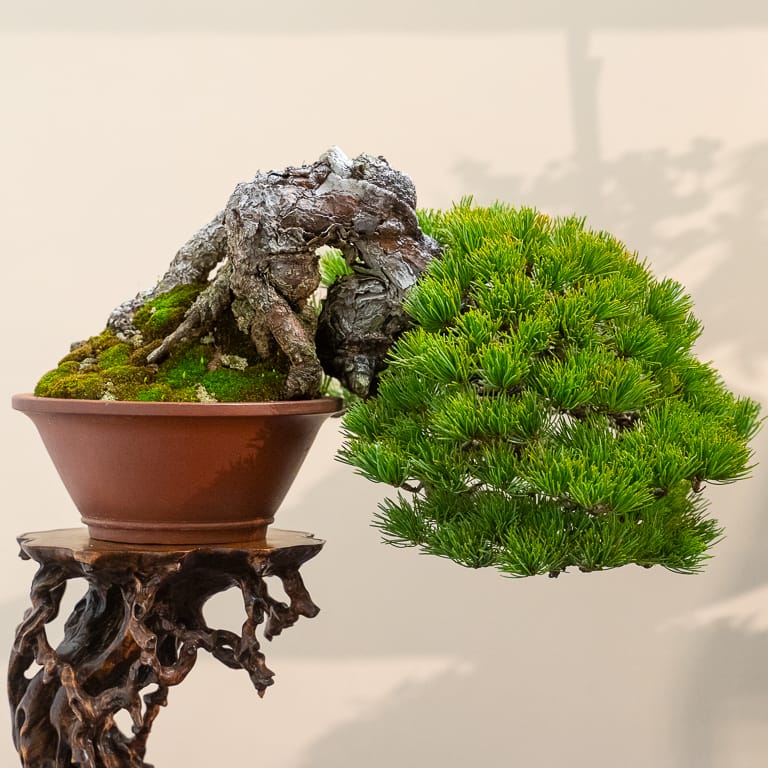
Semi-cascade white pine
This wraps up the mini Kokufu 101 series, which is appropriate, as this is the 1,101st post on Bonsai Tonight! Here are links to all four posts in the series:
Feel free to let me know if you have suggestions for similar posts in the future.
That also wraps up my report from this year’s visit to Japan. Regular bonsai programming will return next week.
Links to Bonsai for Sale!
For those who are interested in finding quality material, I’d like to share two resources you may not know about. The first is a link to Eric Schrader’s sales page:
Check Eric’s site periodically as listings come and go as new trees are available.
The second resource is a catalog of trees for sale by Peter Tea:
There are a lot of trees here so take your time and browse them all! I’ll share additional resources as I come across them.
Subscribe to Bonsai Tonight
New Posts Delivered Every Tuesday and Friday
A G says
Hello. Great article and trees. I always wondered how they get such fat shohin pines in small pots. Are you able to shed light on their process? Do they do a hard cut back once they have the trunk size? Do they grow them slowly in small containers the whole time until fat? Do they grow in large pots and then reduce gradually?
Thanks.
Jonas Dupuich says
Thanks! And great question. From what I’ve seen, pines are grown in relatively small containers and large roots are pruned along the way. Once they go into bonsai pots, they stay in bonsai pots to make sure they’ll continue to fit!
Guilard says
il sont tous aussi beaux les un que les autres ,c’est un régal pour les yeux
Jonas Dupuich says
Thanks Guilard!